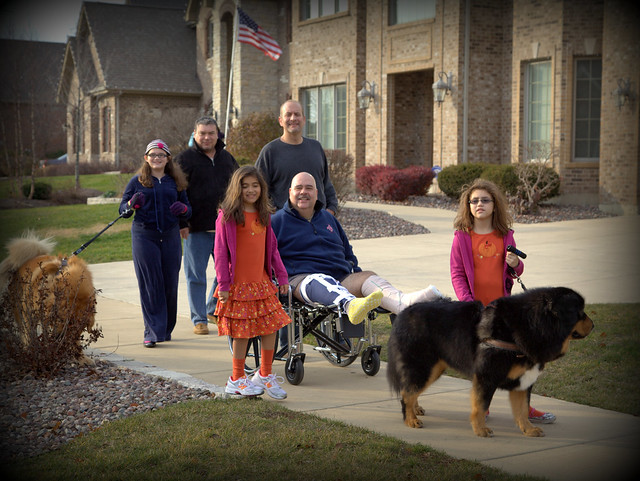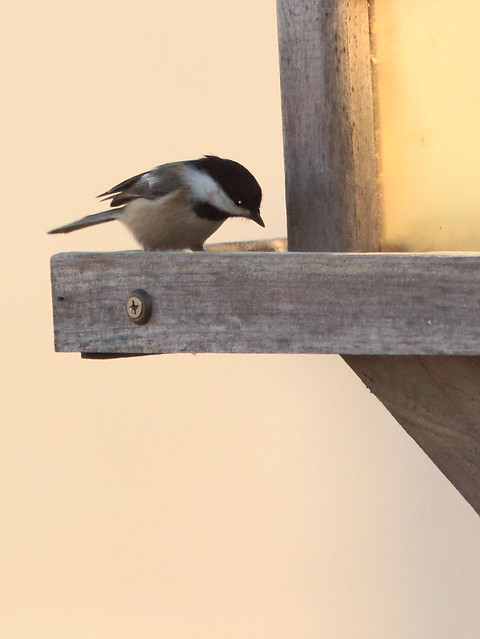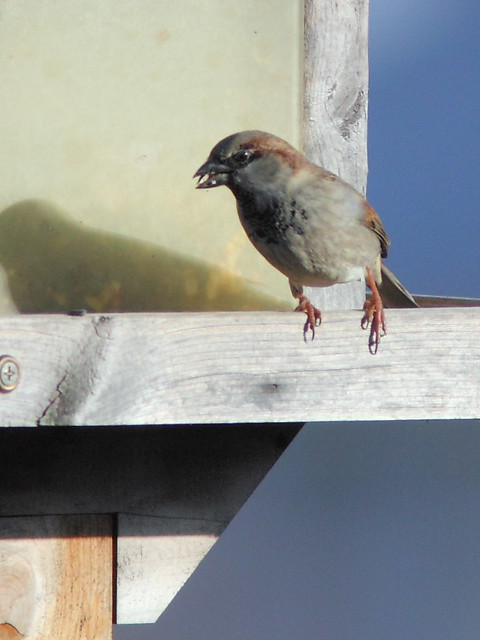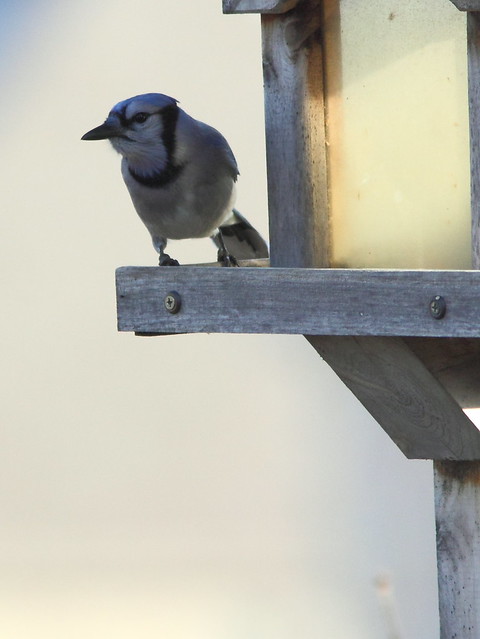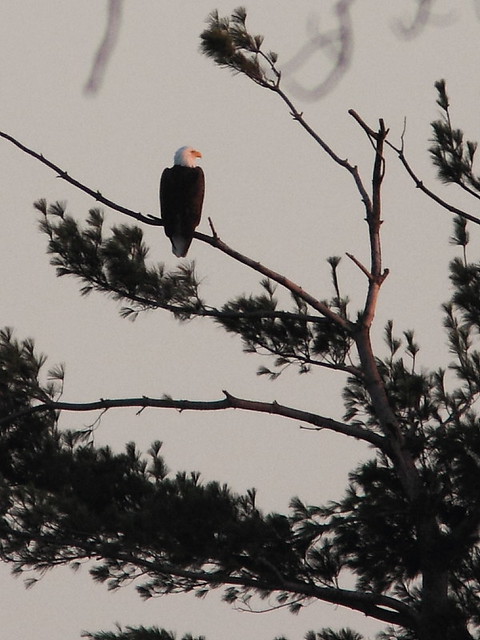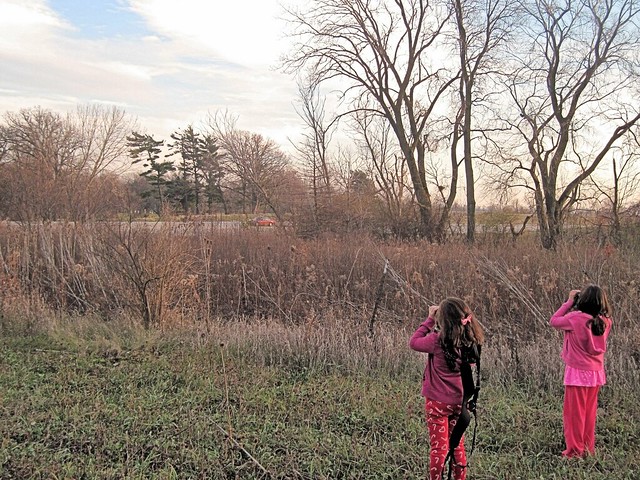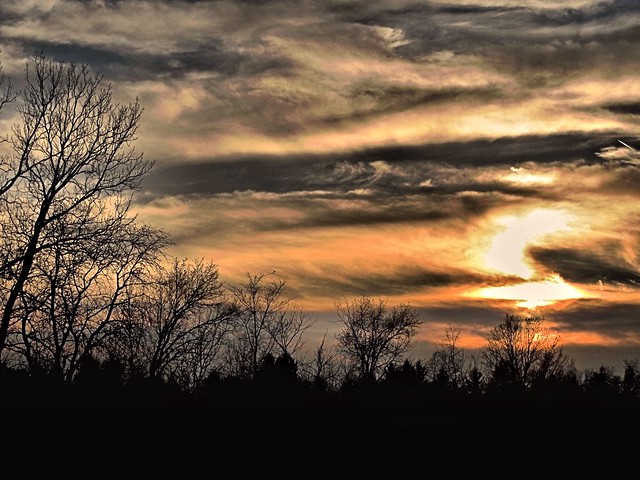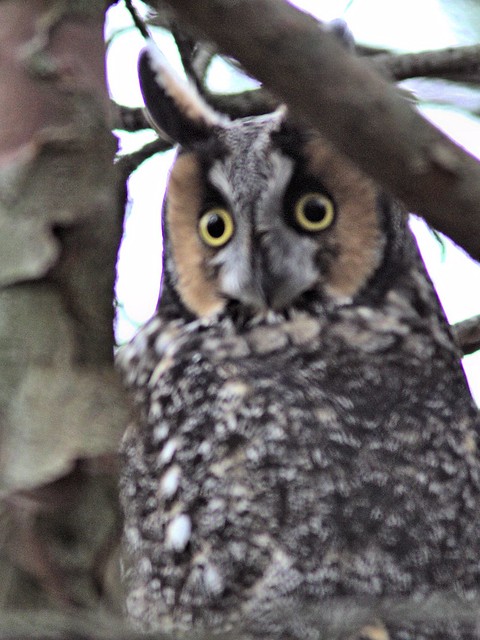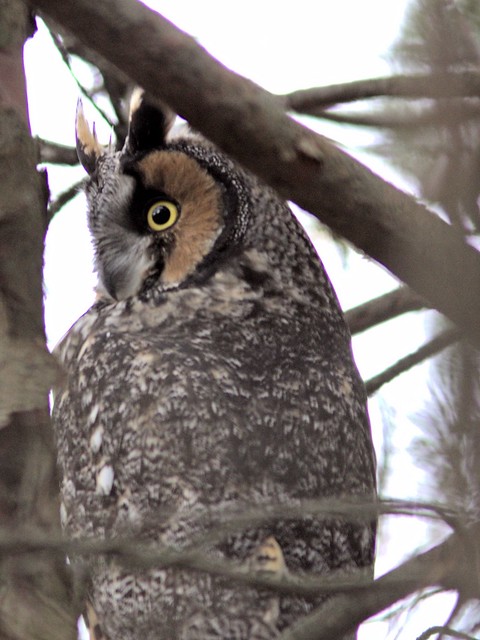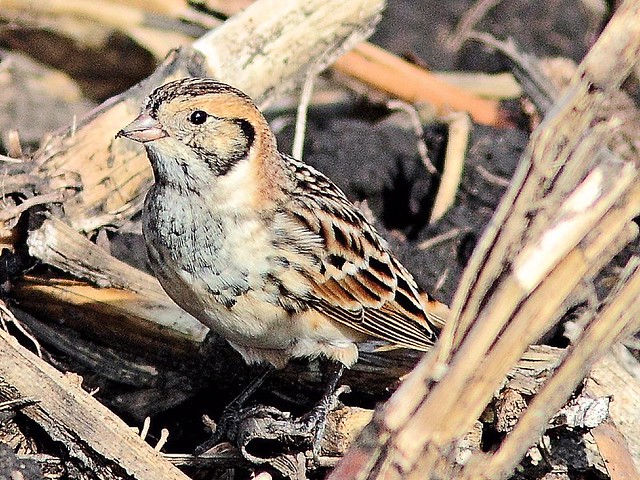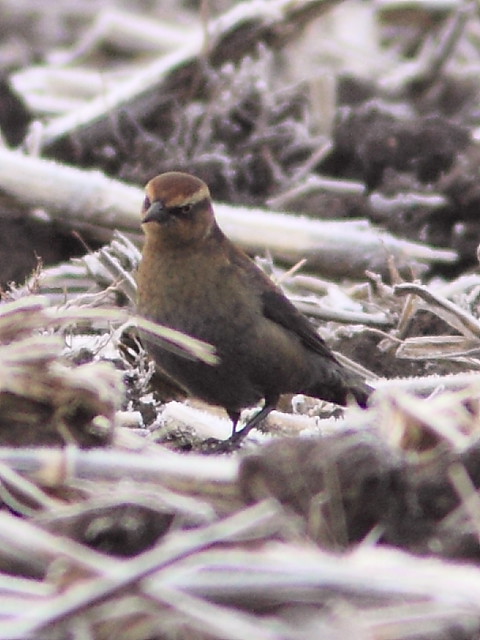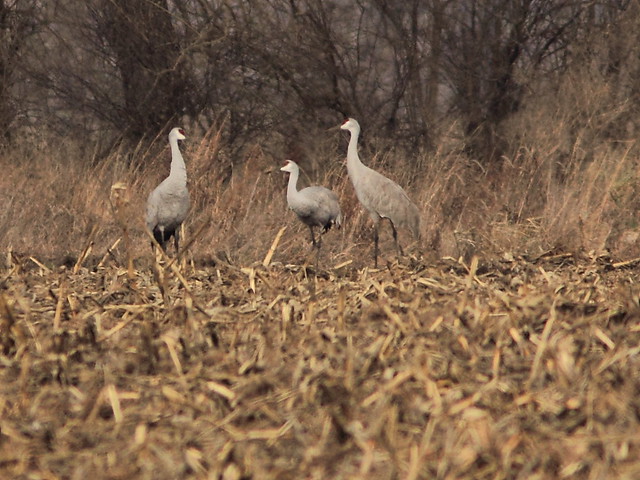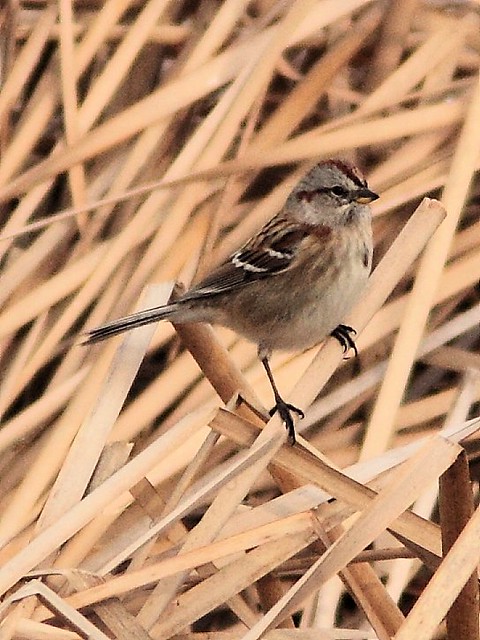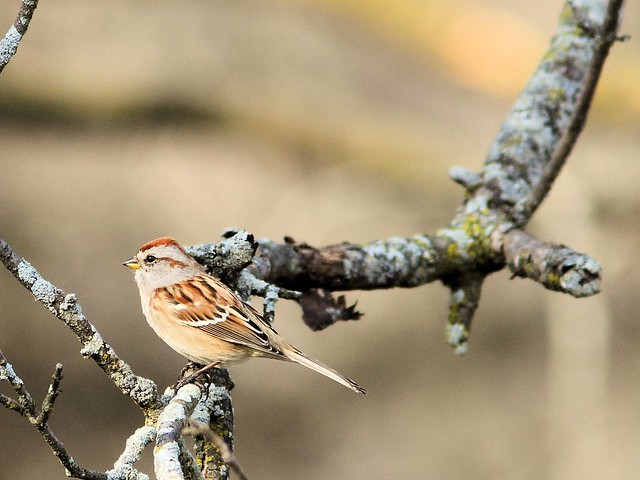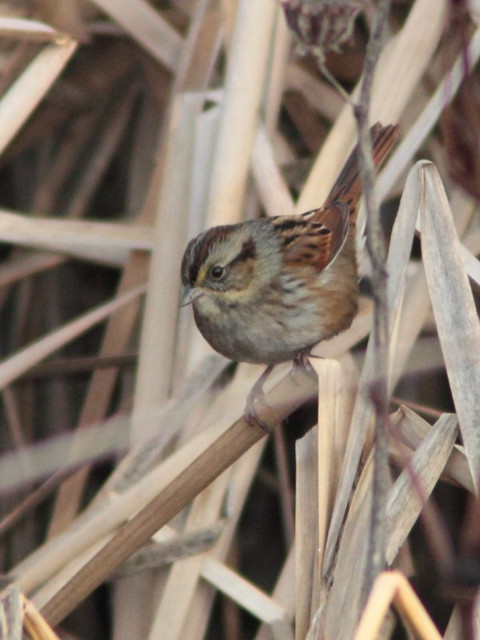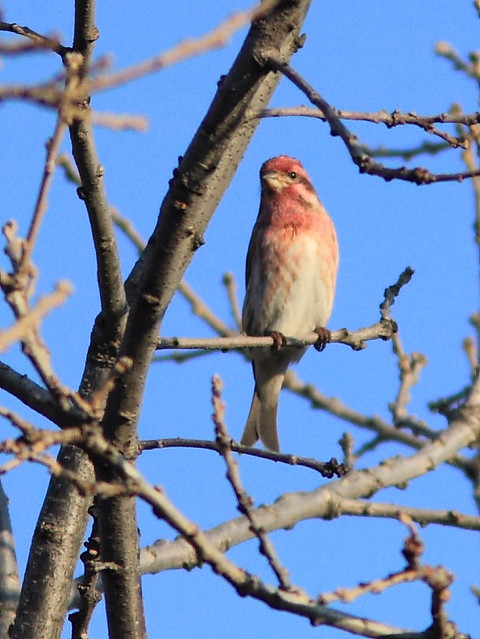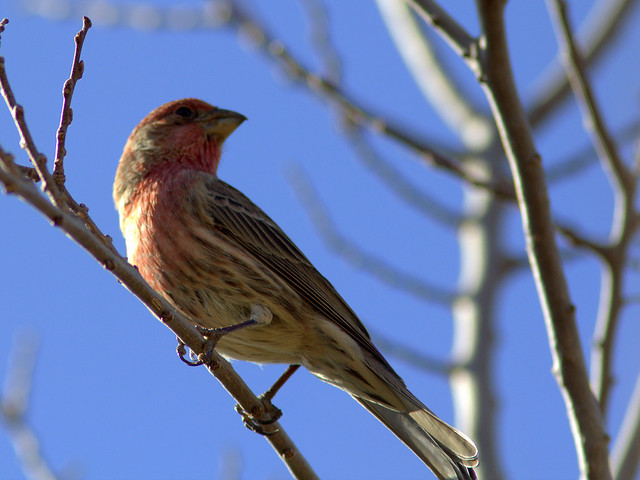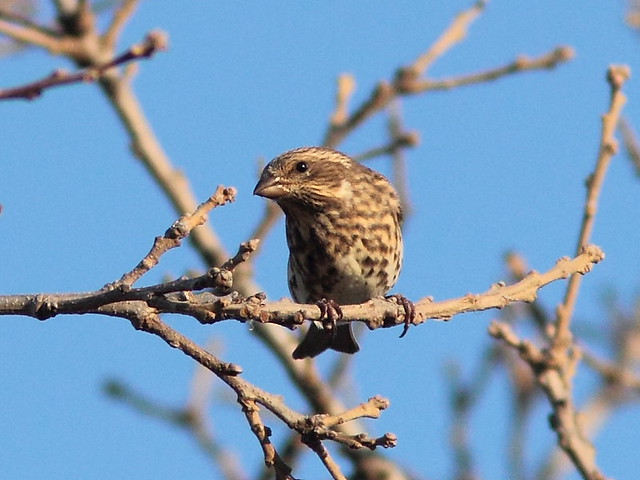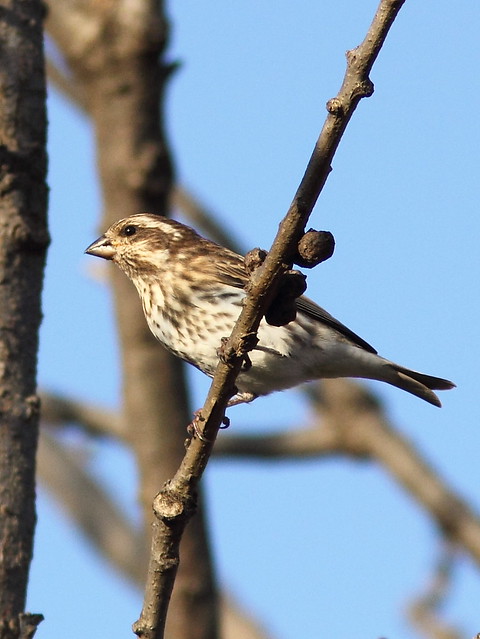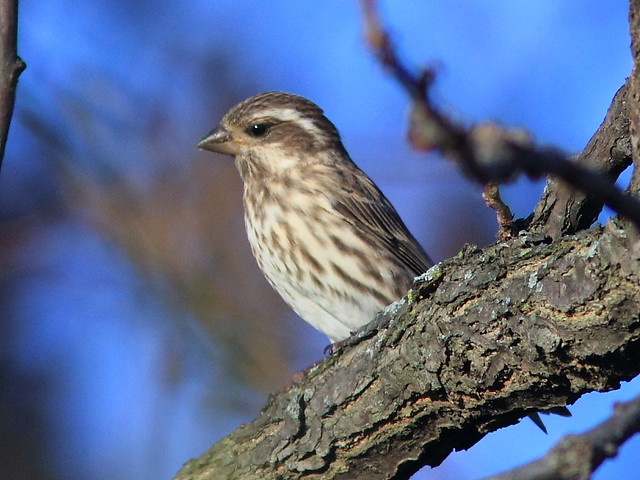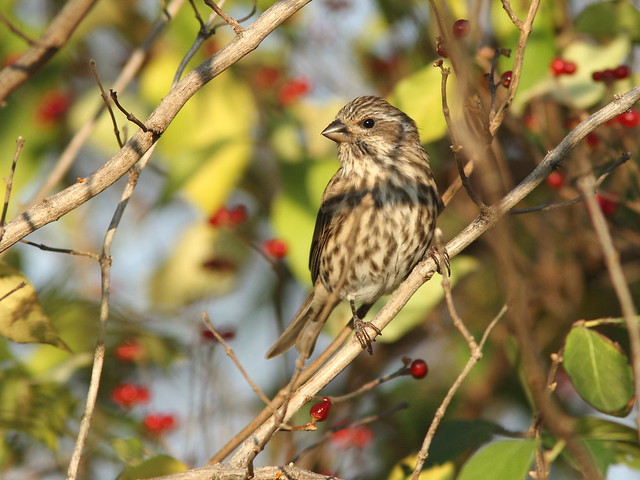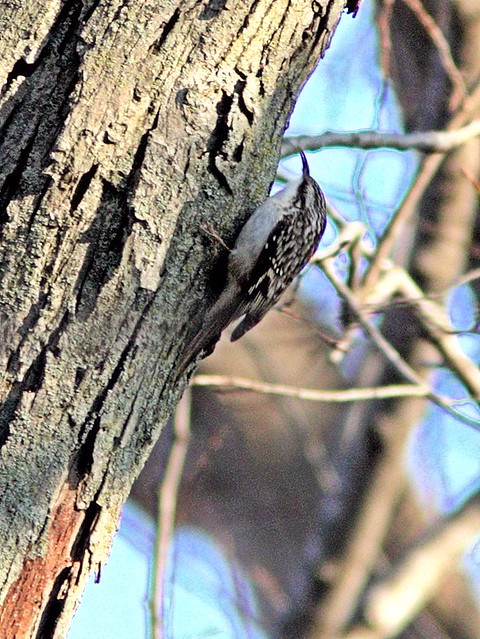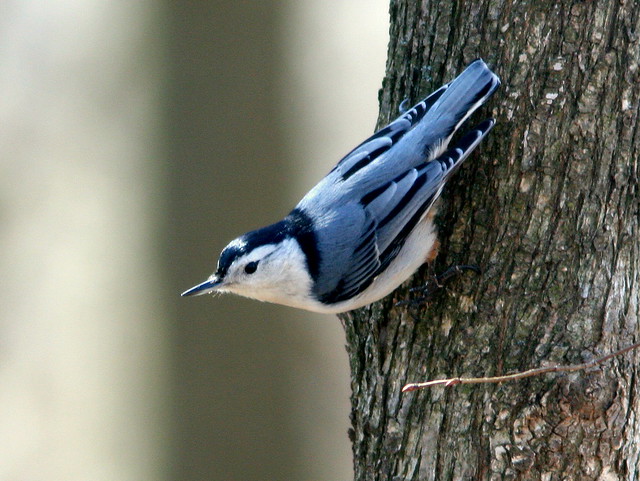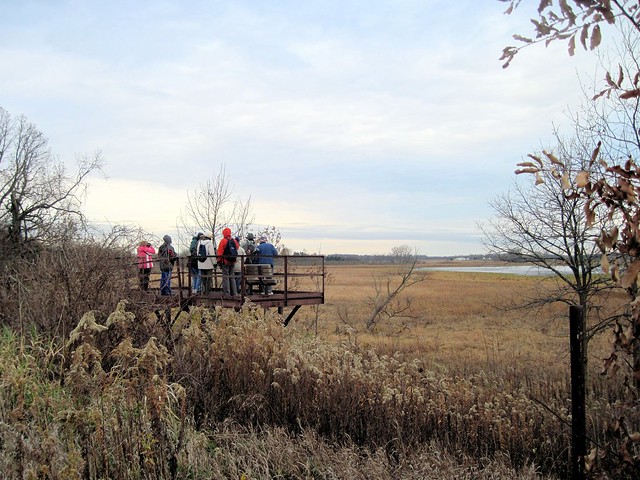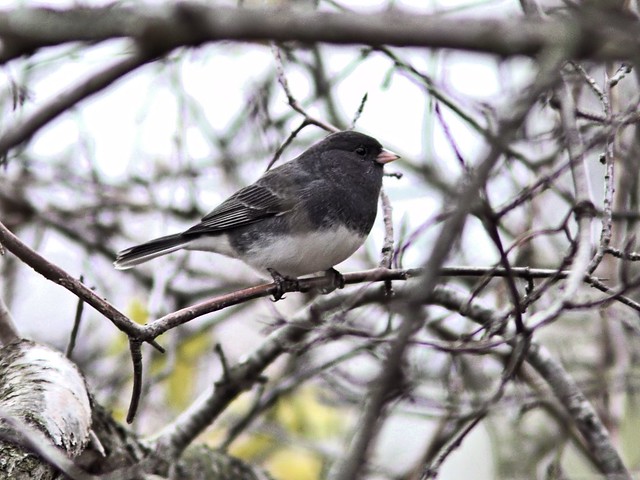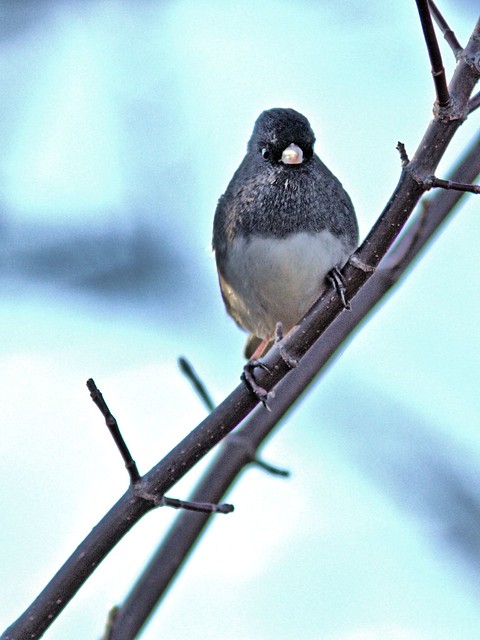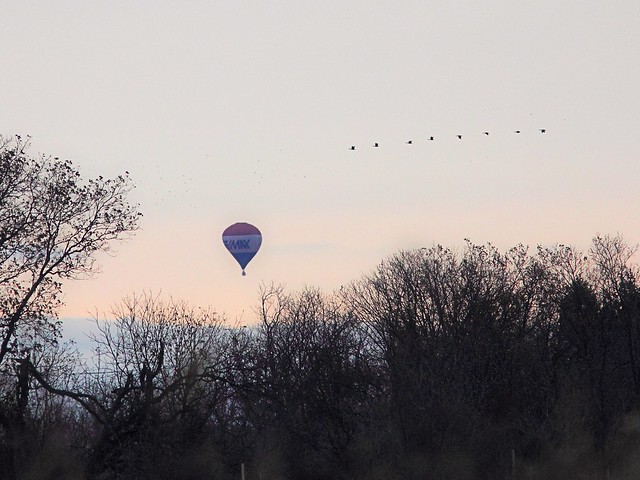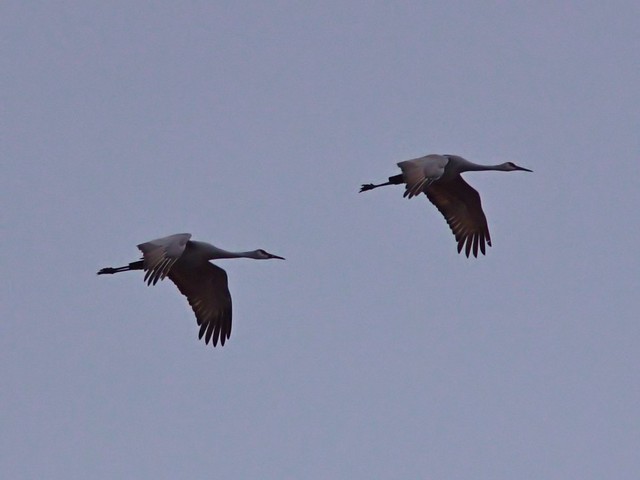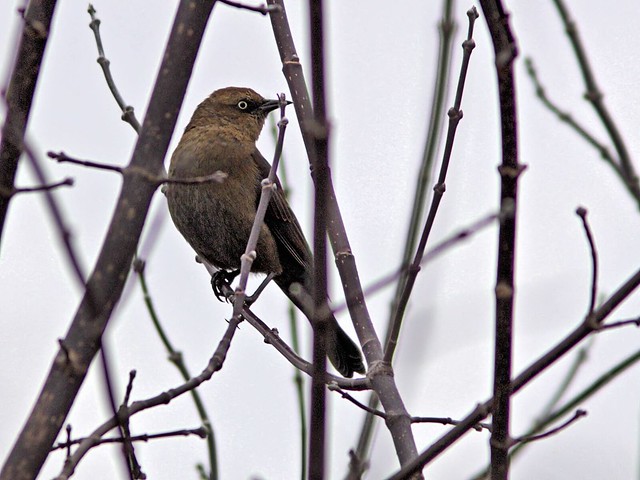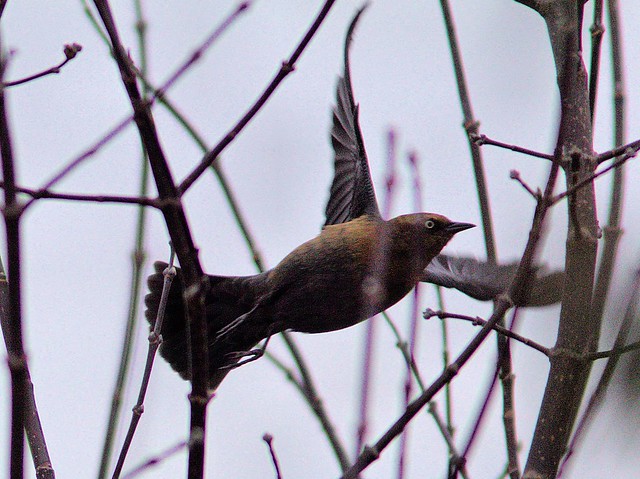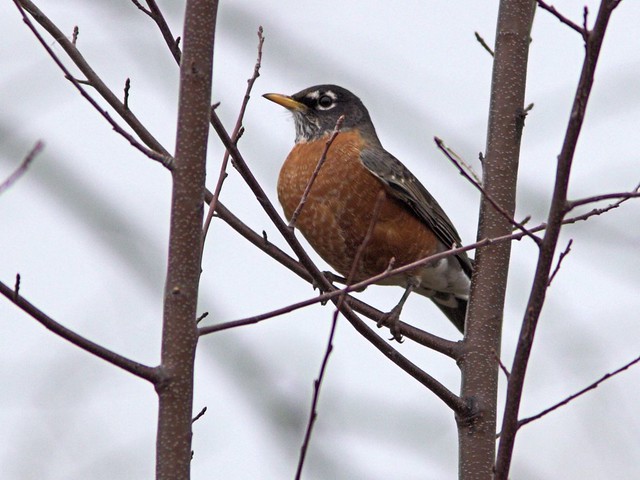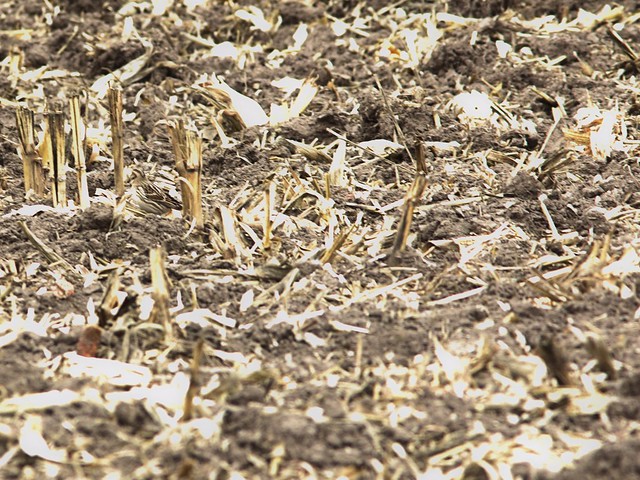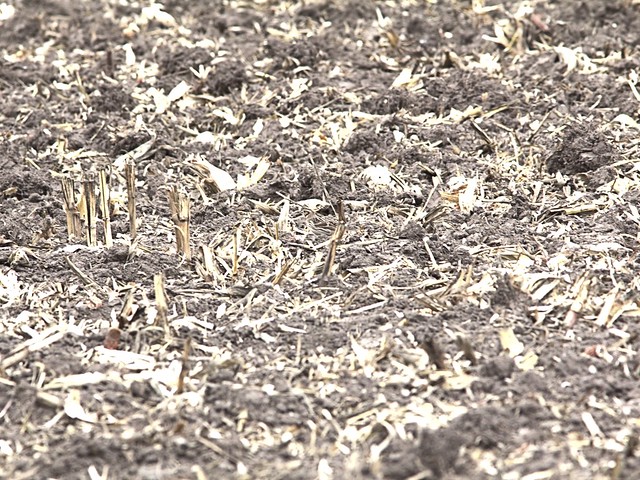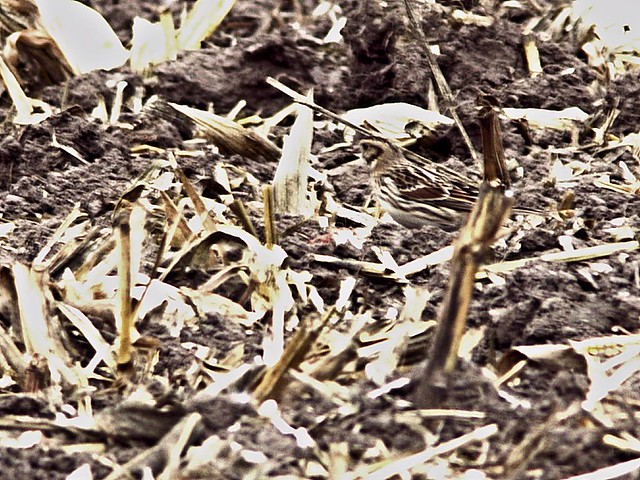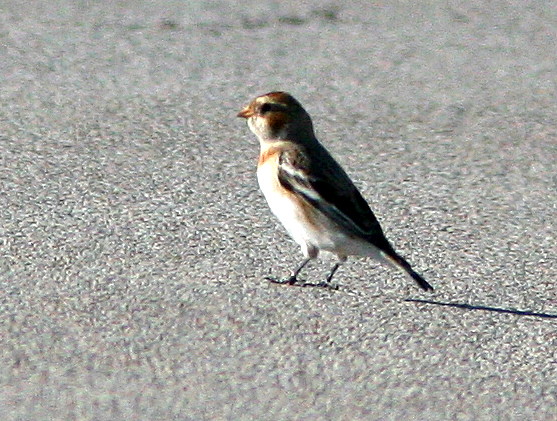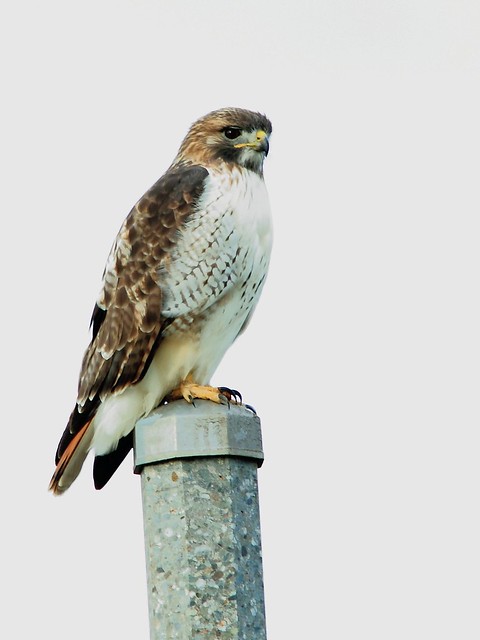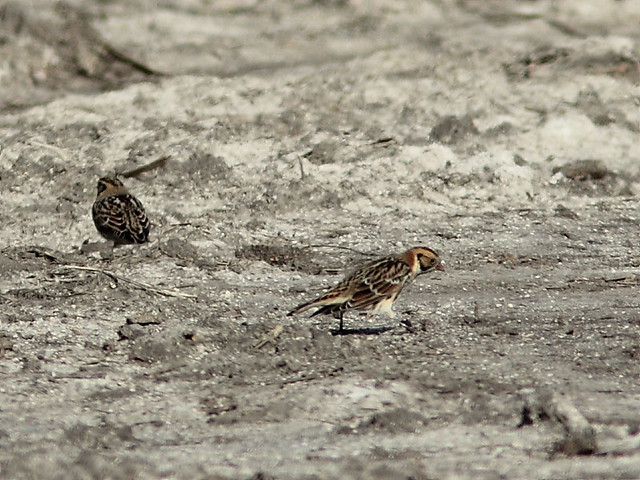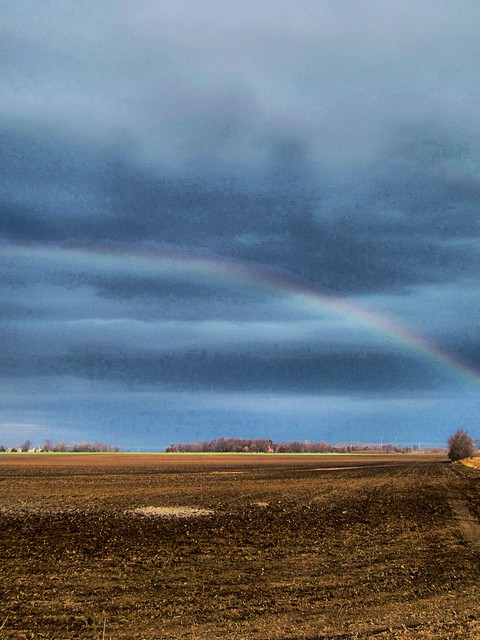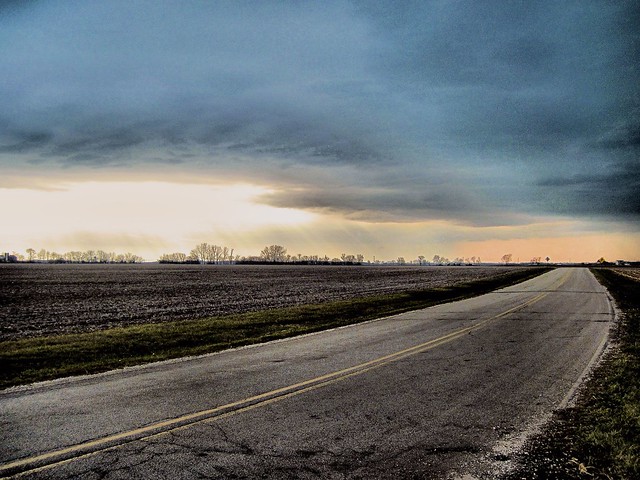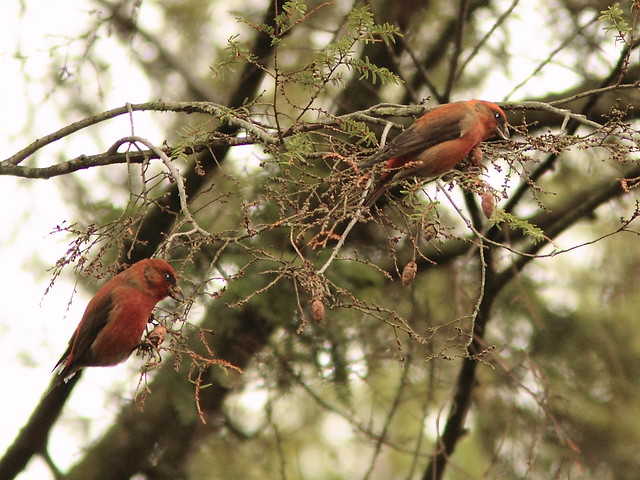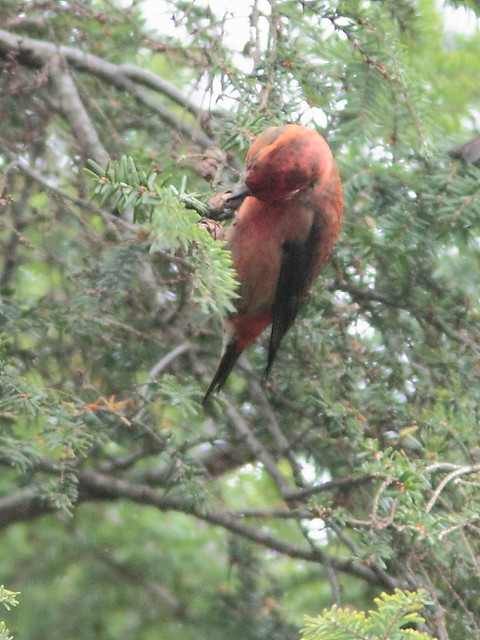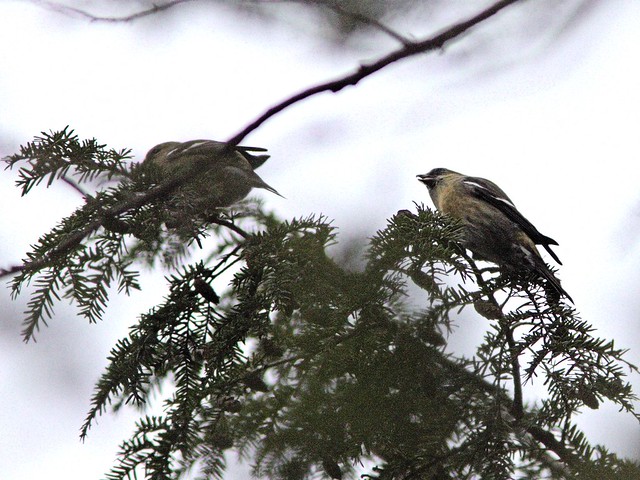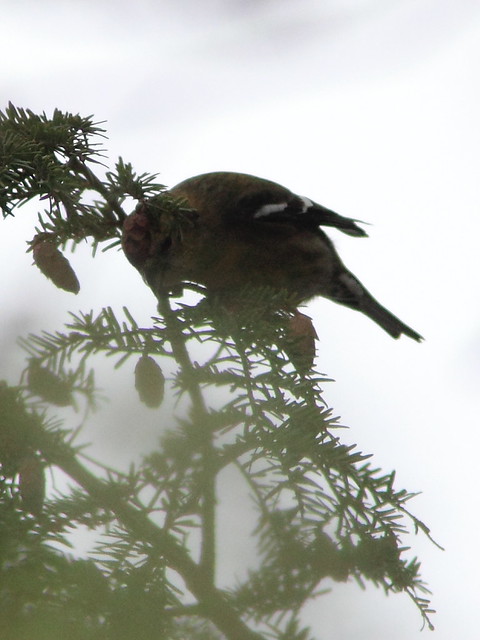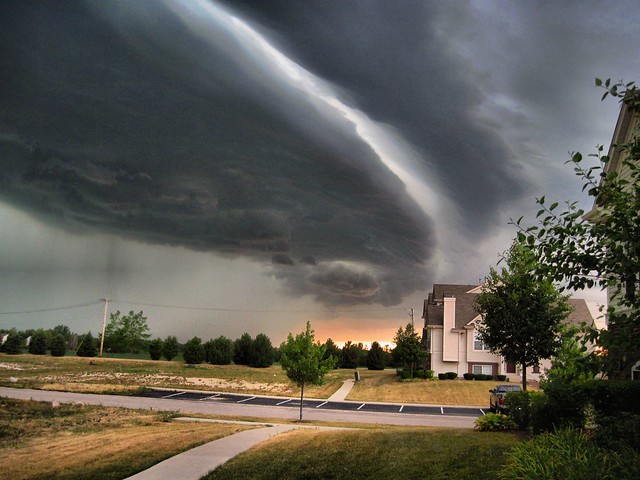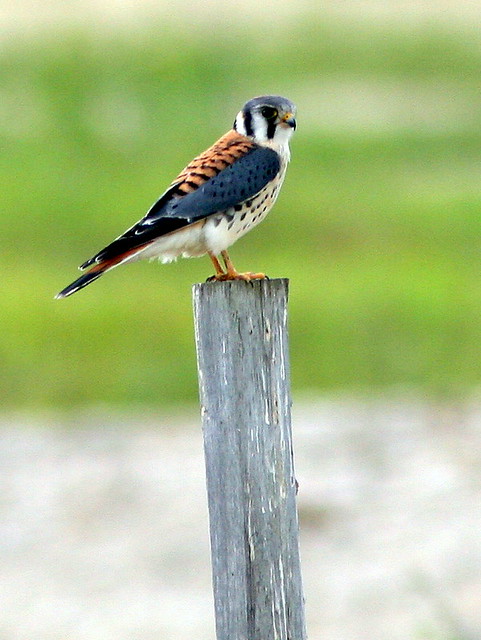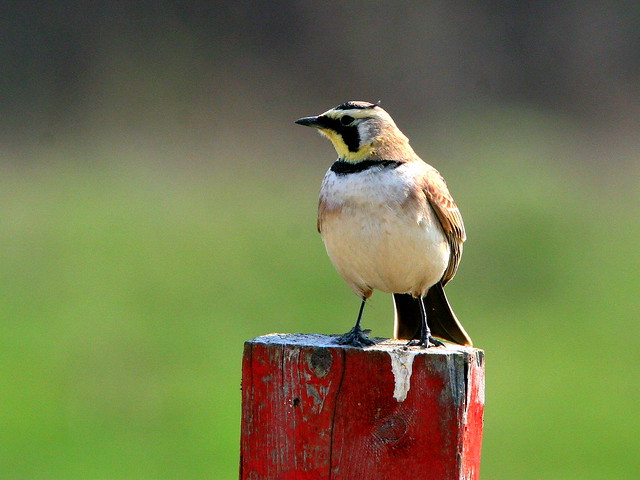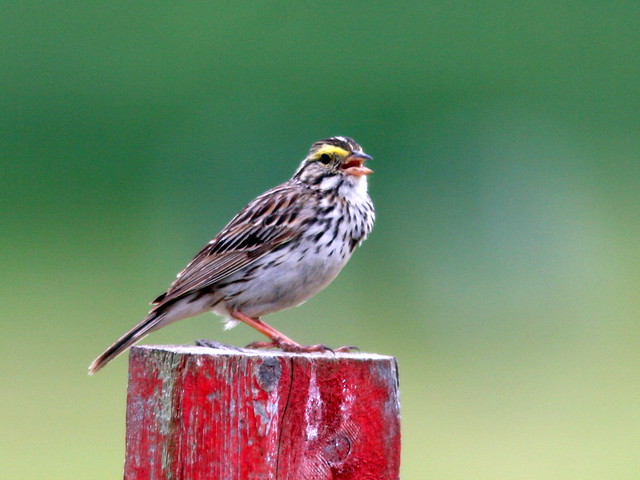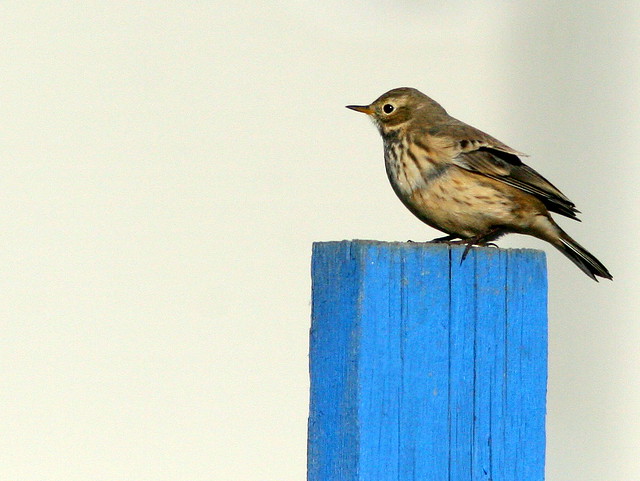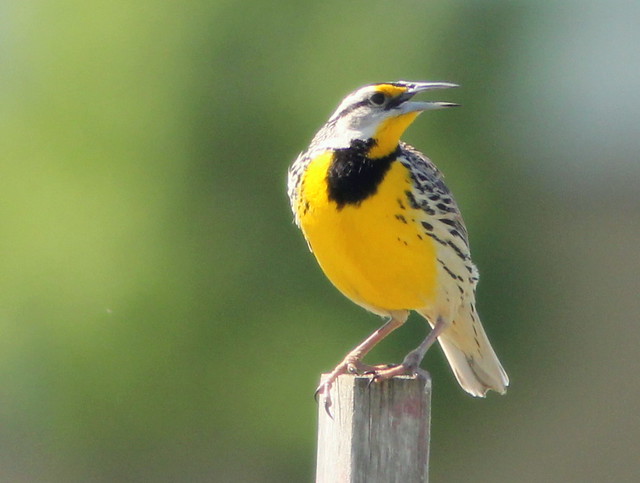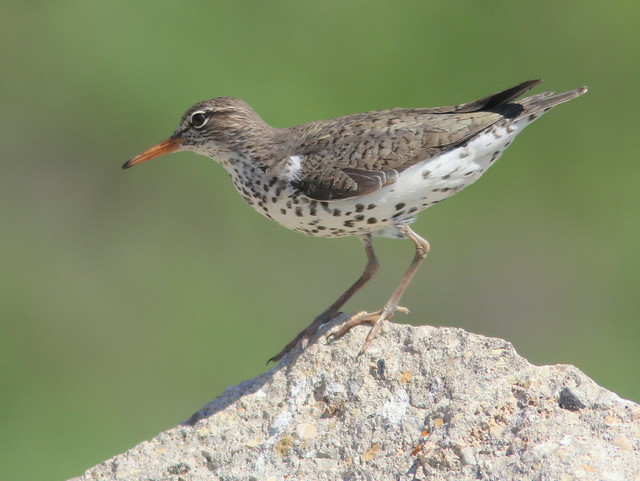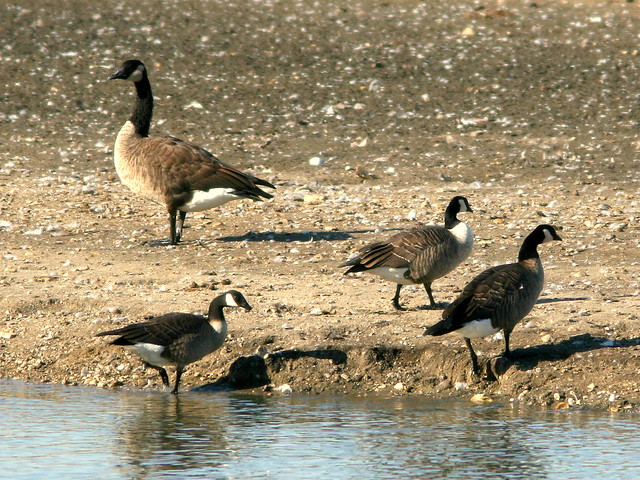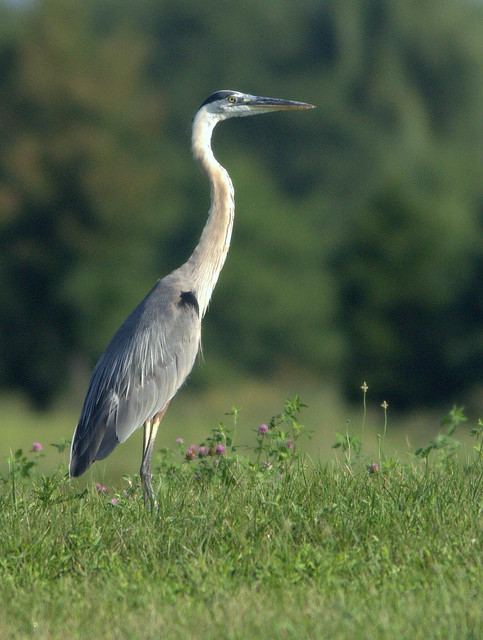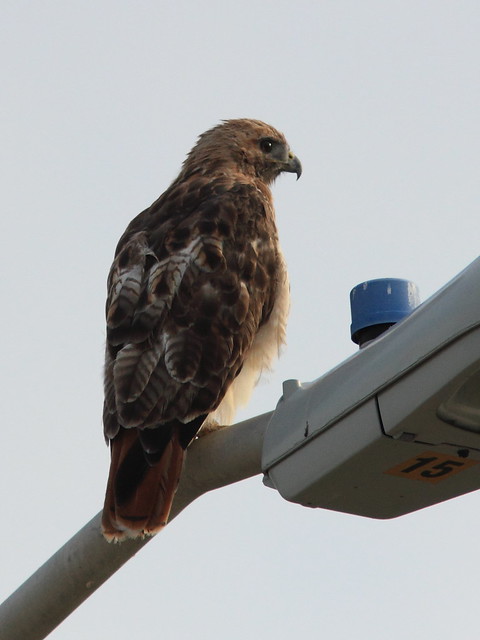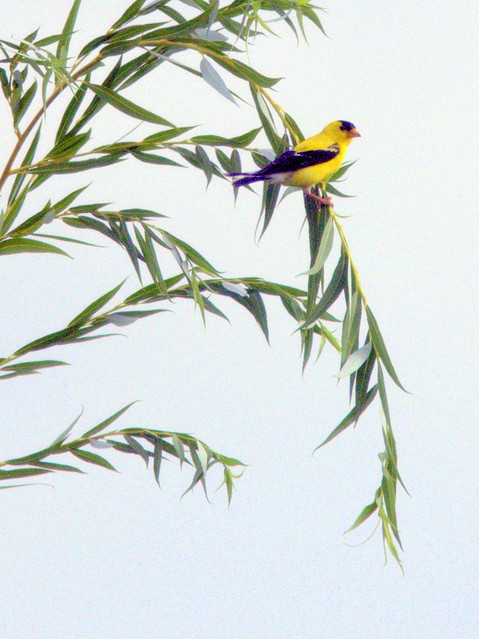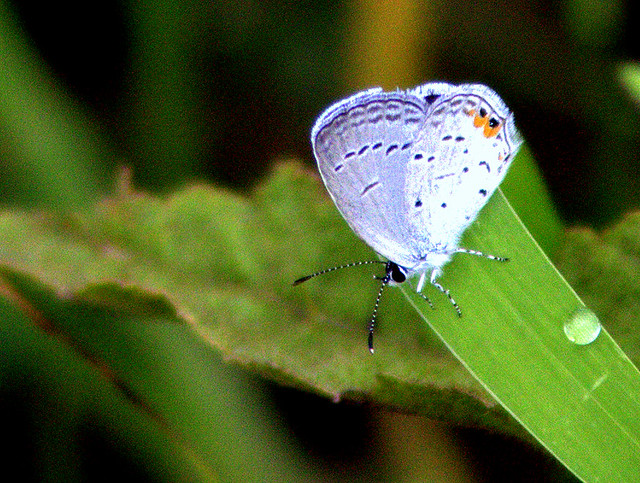ROSYFINCH
RAMBLINGS HAS MOVED TO A NEW LOCATION
Comments
on this page will no longer be monitored or moderated
Visit
us and comment at
http://rosy-finch.blogspot.com
Archives
of previous posts may be accessed via links on the sidebar on this page,
or
visit a searchable collection of all ROSYFINCH RAMBLINGS posts at
http://www.rosyfinch.com/BlogIndex2.html
Posted by: Ken @ 3:13 pm
With this post I have begun migration of my blog to a new site: http://rosy-finch.blogspot.com/
|
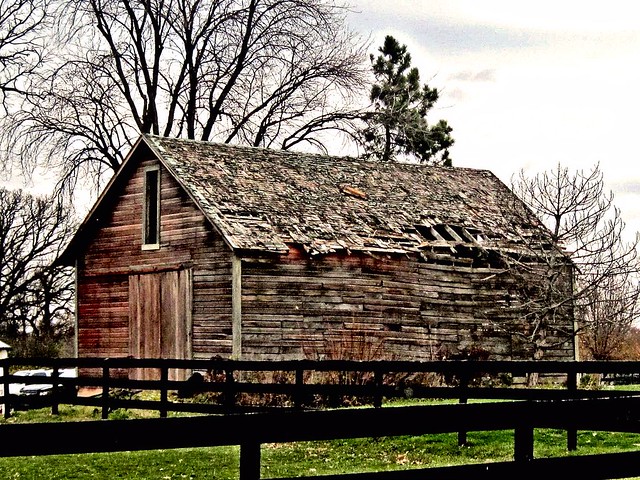
I love the texture of weathered old barns. This one is on our way to the cornfields out west of our Illinois condo.
It has been an eventful two weeks since our son-in-law Roly, while deer hunting in North Carolina, fell 20 feet from a tree stand and broke bones in both of his legs. He was admitted to a rural hospital and transferred to Raleigh. After being stabilized he was transported back to Illinois and underwent surgery a few days ago (ten screws, a metal plate and a bone transplant in his right knee area, and two big pins in the other ankle).
We had planned this unusually late trip up north because he celebrated a milestone birthday on Thanksgiving Day (which also happens to be the 55th anniversary of the day I proposed to Mary Lou!). Roly is now back in his home in a hospital bed in the great room, as he is unable to walk or climb the stairs.
He took a “walk” outside for the first time on Thanksgiving morning, with his daughters, brother, cousins and his two Tibetan Mastiffs.
The house is abuzz with relatives in from Florida and Connecticut as well as well-wishing neighbors and friends. As it turned out, it was lucky that we were here to help our daughter take care of their two daughters. His parents arrived just after the injury and will stay on to help out, so we do not feel bad leaving them for sunny Florida. We are more than ready for some mild weather!
Most of our birding has been watching the feeders from the windows and back deck of their home, as Black-capped Chickadees carried sunflower seeds off, one at a time, to crack them in the trees.
The dark “bibs” of male House Sparrows have been overgrown by gray winter fluff.
When Blue Jays arrive at the feeder, all other birds retreat.
We did get out into the field several mornings. Some “outdoor” highlights of the final weeks in Illinois included taking the granddaughters to a park a few doors from their home to see the Bald Eagles that have nested there for the past couple of years. The nest tree is just across a busy thoroughfare, opposite Hawk’s Bluff Park in Batavia. The girls crept up as far as they could to get a better look at a roosting eagle.
The park includes a woodland with some big old oak trees.
We watched the eagles until nearly sunset, when it suddenly turned very cold.
A few days before, I was with another birder when he discovered a pair of Long-eared Owls in a grove of evergreens. They were roosting near an old nest that included some fresh vegetation, suggesting that they may be setting up housekeeping. Like some other owl species, they may nest as early as late winter. We are sworn to secrecy about the location of the owls, as they are rare enough to induce crowds of birders to enter the sensitive area of their roost.
We took a few photos and quickly left them in seclusion. The camera’s automatic focus did not work because of the branches in front of the owls, and my vision is not clear enough for proper manual focusing. I was so intent on trying to focus on their eyes that I did not realize that my shots did not include the lower parts of their bodies! Although Mary Lou and I had seen Long-eared Owls previously, this was my first photo opportunity.
Mary Lou and I returned to the cornfields and this time got much better looks at Lapland Longspurs. We used the car as a blind and drove slowly toward the flock. We failed to sight any Snow Buntings, though another birder photographed one at the same location a day later.
We did see a female Rusty Blackbird foraging among the corn stubble.
A brief walk in nearby Prairie Green Wetlands preserve in Batavia produced these three Sandhill Cranes.
Numerous Canada Geese flew overhead. As common as they are, I find them beautiful in flight.
American Tree Sparrows have arrived from the north.
The tree sparrow has a rather bright brown line behind its eye that does not extend to the area in front of the eye, nicely shown in this photo.
Among the flock of nearly a dozen was a single Swamp Sparrow. Note its pale throat, the more extensive gray area on its face and the dark “mask” created by the dark edges of its cheek patch.
The somewhat similar Chipping Sparrow (photographed in our daughter’s back yard) has a dark line that passes through to the front of its eye.
Please direct any comments to the new site, or contact me directly if necessary.
DO NOT POST COMMENTS AT THIS SITE AS THEY WILL NOT BE MODERATED.
Thank You!
Posted by: Ken @ 6:10 am
Hurricane Sandy brushed by a couple of days after our departure, but otherwise we picked a terrible time to leave south Florida! The low temperatures at our Florida home are finally dipping to around 60 degrees (F), about 20 degrees warmer than the daily highs in Chicagoland.
On our first morning upon returning to our Illinois condo, Mary Lou and I got out early to the east side of nearby Nelson Lake/Dick Young Kane County Forest Preserve. We immediately encountered a flock of 20+ Purple Finches that ranged in the woodlands at the lake’s eastern edge. Only one or two were in adult male plumage. It was this fall’s first reported sighting of the northern species at Nelson Lake.
They bear some resemblance to the common resident House Finches (photos below), a few of which joined the Purple Finches. Note that the upper edge of this House Finch’s bill (the culmen) curves down slightly, parrot-like. It also has shorter wings, less pronounced facial markings, darker streaks on its breast, and a shorter tail that is not notched as strongly as that of the more robust Purple Finch.
Here is another House Finch, showing how the red color of its forehead and breast has an orange tint (”brick colored”) while that of the Purple Finch looks richer rosy-pink or purple and suffuses its head and upper back and chest (as if dipped head first in raspberry juice).
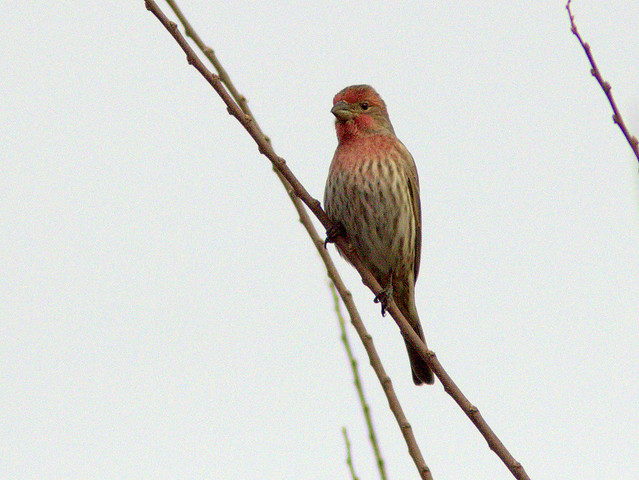
The other Purple Finches were brown females and hatch-year males. They are boldly streaked and exhibit a bright white line over their eyes and a straight culmen.
Several remained at close range as they feasted on berries.
For comparison, here is a photo of a female House Finch. Its face is noticeably plain and its streaks are less well-defined against a grayish background.
A Brown Creeper worked its way methodically up the trunk of a tree.
In typical fashion, the creeper flew to the bottom of an adjacent tree and again moved upward, while a White-breasted Nuthatch (”upside-down bird”) tended to do the opposite. Between the two species, both the upper and lower areas of the crevices in the bark are more thoroughly gleaned.
The first Saturday of each month is “Scope Day” a Nelson Lake. Despite freezing temperatures, about a dozen birders showed up. The lake shore usually extends much more closely to the viewing platform, but this year’s drought has taken a toll.
It was nice seeing (Slate-colored subspecies) Dark-eyed Juncos, hardy little winter visitors who do not make it down to south Florida. This one seemed to have indistinct wing bars, suggesting it might have some of the White-winged subspecies in its lineage.
Fox Sparrows were present in good numbers, many of them singing as if it were spring.
We saw a flock of seven unidentified swans, but they disappeared behind the trees before I could raise my camera. Canada Geese flew across the same area of sky. A hot air balloon added interest to the scene.
I also captured a pair of distant Sandhill Cranes in flight.
Hundreds of Common Grackles and other blackbirds, mostly Red-winged, flew overhead. Among them could be heard the calls of Rusty Blackbirds, a species I had seen before but never photographed. Luckily, a flock settled in a nearby tree, and I could pick out a few of the brownish Rusty species. They are slightly larger and have longer tails and more slender bills than Red-winged Blackbirds, but are smaller than grackles. Their pale eyes contrast with their dark faces.
A species of conservation concern, the Rusty Blackbird population is declining. There is no clear explanation as to why their numbers have significantly decreased 90% over the past 30 years, both in their breeding grounds in far northern boreal forests and in their winter range. Theories about the cause of the drop in population include destruction of winter and or breeding habitat and acid rain (read more here). Even though they associate with the Red-winged species, the Rusty Blackbirds often stay slightly away from their relatives, making them stand out.
It’s always nice to see American Robins, as they do not nest in south Florida and only show up there irregularly during the winter.
The past two weeks have been very eventful here in Illinois, limiting our time afield (as well as computer face time). Our son-in-law was deer hunting in North Carolina and fell as he was climbing into a tree stand. He broke bones in both legs and after he was stabilized was flown back to Illinois. Since he fell from a height of 20 feet, he is lucky that he landed on his feet rather than his head or back, as he could have been paralyzed or killed. He needed surgery (ten screws, two pins, a metal plate and cadaver bone transplants) on both legs and got out of the hospital only yesterday. We have been busy minding our two granddaughters.
We are looking forward to our return to Florida, where our local pair of Bald Eagles is preparing to start a family. Here is one of the pair that I photographed last breeding season.
Posted by: Ken @ 7:27 am
Today I will start off with a bit of a puzzle. Can you find the Lapland Longspur? I was following a Horned Lark amid the stubble of a cornfield with my camera viewfinder and got a few poor shots when it seemed to disappear. I took a couple more photos, not realizing that it had flown off. Back home, looking at this image on the computer, I was ready to discard it as an “empty” frame, but suddenly a different bird caught my eye. Can you find it? Don’t cheat– look at each photo in turn!
Where’s Waldo? (Click on the image and right-click for larger sizes up to the original, and a few hints.).
Here was the shot taken just before the one above, with a different white balance adjustment. This time I will give you a hint. Look in the very center of the photo.
OK, here is an enlarged and greatly enhanced crop from the photo just above.
Our reason for setting out along this lonely farm road to patrol the corn fields was that exactly two years previously, and at the same spot, I first photographed this Snow Bunting as well as several Lapland Longspurs.
On our way out to the fields, which are about 3 miles west of our NE Illinois condo, we encountered a Red-tailed Hawk on a light post.
The hawk flew to roost in a nearby tree.
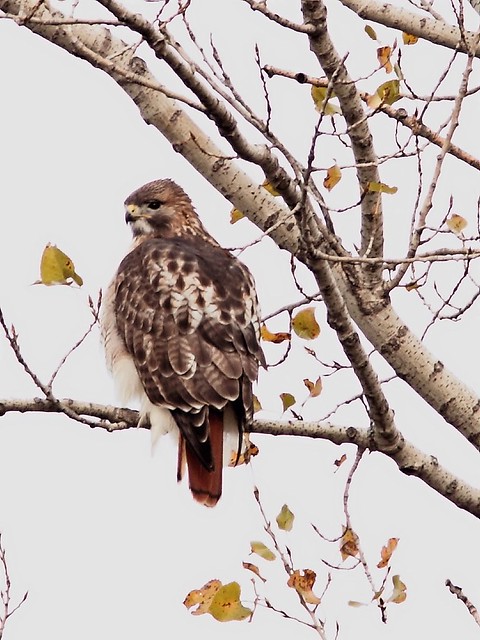
This time the Lapland Longspurs were far out in the cornfield. It was windy and below freezing, and bright mid-morning light created deep shadows. Not using the flash attachment, I failed to obtain any decent images of the longspurs. These two were about the best I could manage. None of my Horned Lark photos turned out very well.
We had to leave in a hurry as a storm approached from the west. It first produced a rainbow over the fields. I think I lost my lens cap in the rush back to the car.
Then came the thunder. Heavy winds and hail hit just as we arrived back home.
The day earlier we visited Morton Arboretum in search of crossbills that had been reported there. We found them high in the conifers, but the dark and dreary skies and distance produced soft images. Most of the flock of 25 or so consisted of Red Crossbills.
They extracted seeds from the cones with their specialized bills and tongues.
Among them were a few White-winged Crossbills. I had seen this species previously in Santa Fe, New Mexico, but this was my first photo opportunity. My poor images simply serve to document the event. I must return!
Posted by: Ken @ 6:24 am
One’s priorities change over time. The inevitable and the unexpected, and the balance between wants and needs all come into play. Getting drafted in 1966 and suddenly moving from New Jersey to west Texas with our three children was jarring, yet eventful in a very positive way. We selected our El Paso rental home mostly because of its convenience to schools, work and shopping. The expansive blue sky and the mountainous backdrop were pleasant but not necessary. Likewise, our subsequent homes in New Orleans and Dallas were chosen with similar needs in mind.
Only after 27 years, when retirement approached and we were “empty nesters” did we think about what we really wanted in a home. My love for the southwest was an overwhelming consideration. For Mary Lou, proximity to family was an equally important factor. On one of my business trips to New Mexico I learned of a new subdivision under construction. In a moment of free time I visited the site and called the number on the real estate agent’s sign. After a short visit I selected a home site and called Mary Lou to seek her agreement on entering into a contract. Despite her reluctance about the fact that I had not yet even set a retirement date, I knew she shared my feelings about the region. Besides, two of our children lived within a few hours drive, in Texas and Arizona.
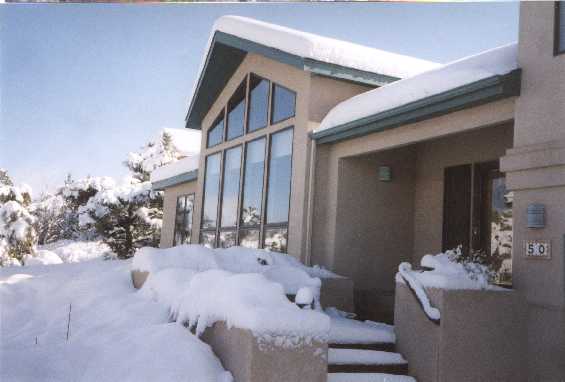
In New Mexico, living at 7,000 feet elevation, we had our mountains and four seasons.The tremendously varied habitats provided great birding. Of course, the nearest shopping centers and health care providers were located twenty or more miles away, accessible only through a single mountain pass that could be choked by a blizzard or a traffic accident. After eleven years we reconsidered our priorities, and took the dramatic step of moving to south Florida, to be near our younger daughter’s family. In lieu of mountains we wanted to look out over water. Eyes that are fixed on a distant vanishing point are eyes at rest.
Our daughter actually selected our Florida home. We ratified her choice and moved here in 2004. We had not yet sold our New Mexico home when, three months later, her husband got a big promotion to Chicago and they moved away with our two baby granddaughters! It took us two years to make the weighty decision to purchase a second home in Illinois. We hoped to balance our newly discovered love of mild Florida winters with our need for family. Now the view was not an issue. We required only a “crash pad,” a place to stay when it was hot and humid back in Florida. We selected a town-home only two miles away from our daughter’s house.
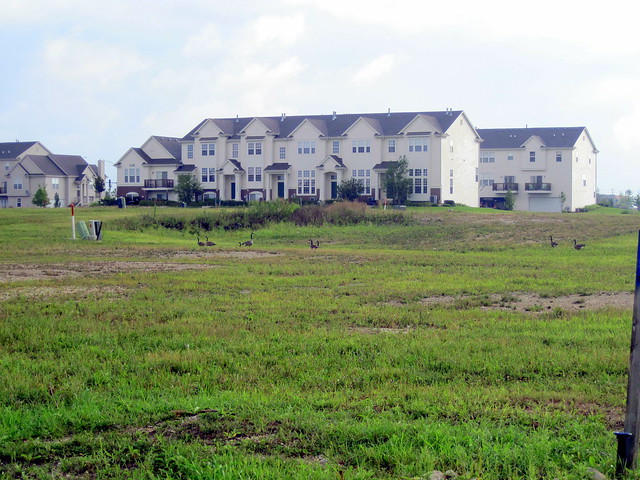
It was a new unit, in one of the first of 36 buildings that were scheduled to be part of a complex with homes for over 200 families. We knew that subsequent construction would fill the surrounding open space and blot our our view of the horizon. The housing crisis hit as the seventh building was finished, and the developer was unable to complete the project. Construction was put off indefinitely, and the land, the equivalent of four or five city blocks around our condo, remained undisturbed for six years. As it returned to an imperfect grassland, it became an unexpected birding treasure. The above photo was taken in 2010, after the land had been healing for four years.
Thunder was usually the only ominous sound under the prairie skies.
Sadly, but not unexpectedly, this week we also heard the roar of bulldozers as the entire area was being cleared and graded. Time to stop and remember how nice it was while it lasted.
Our front door provided an ideal vantage point for viewing birds that rested on the color-coded utility markers. (Click on images for additional views)
American Kestrels nested in one of the large trees along the main road.
Horned Larks built their nests early in the spring near our front doorstep.
Savannah Sparrows sang and defended their territories.
American Pipits visited during migration into winter.
At least one pair of Eastern Meadowlarks raised a family out in the largest open tract.
Red-winged Blackbirds shared a pothole with muskrats.

A pile of construction rubble provided another high perch in the treeless empty lot. We could drive around the corner and park, using the car as a blind, and just wait for the next bird to occupy it. Lazy birding at its best!
Spotted Sandpipers sang all spring. The area had room for several breeding pairs.
Song Sparrows visited and probably nested along the shrubby margins.
For the past two years, Vesper Sparrows serenaded from the roof of our condo and surely found nesting areas in the weeds near the old mound of topsoil left when the area was first cleared.
In spring, melting snow and rain created roadside “fluddles” that attracted other birds. The only photographic challenge was to park with the sun at our back.
Solitary Sandpipers passed through during spring migration.
Sandhill Cranes brought their colts to feed in the field right near our doorstep.
Both Canada and the smaller Cackling Geese made use of the “floodles.”
On one occasion, a “blue” Snow Goose paid a visit (photographed from inside an upstairs window).
A Great Blue Heron seemed to be hunting insects and possibly voles out in the fields.
Red-tailed Hawks roosted on streetlights over empty roadways.
Many Killdeer courted and raised their chicks every spring.
Along the far edge of the property, American Goldfinches, flowers and butterflies delighted us with their color…
..Chicory…
…Summer Azure
I can mourn the loss, but cannot reverse progress, and will revel in remembrances of a plot of land no longer vacant.













